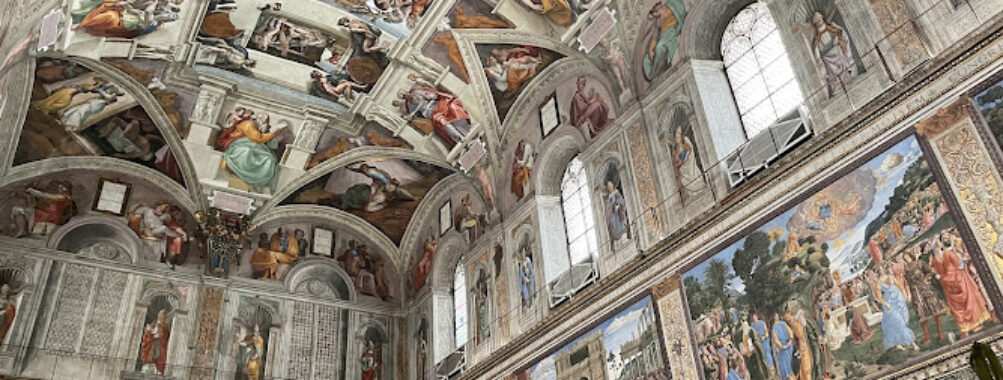
Vatican Museums
“`html
Table of Contents
Description
The Vatican Museums are one of those places that feel almost impossible to describe in a single breath, because they’re not just one museum—they’re a sprawling collection of galleries, courtyards, staircases, and hidden corners that together tell the story of centuries of art, faith, and human creativity. Travelers who step inside quickly realize this is not a quick in-and-out kind of stop. It’s more like wandering into an entire world where every hallway seems to whisper a different secret. From ancient Egyptian artifacts to Renaissance masterpieces, the Museums offer a journey through time that’s both overwhelming and awe-inspiring.
And yes, it can be crowded. Sometimes it feels like half the world is trying to squeeze into the same hallway. But there’s a reason for that: the treasures here are unlike anything else on the planet. The Sistine Chapel ceiling alone—painted by Michelangelo—has a way of making you forget the noise around you. The sheer detail and scale of it stops people in their tracks. Some visitors leave with tears in their eyes, others with sore necks from staring upward for too long. Either way, it leaves a mark.
What’s also worth noting is how accessible the Museums have become. Wheelchair users and families with young kids are not left out, thanks to ramps, accessible restrooms, and even changing tables. There are restaurants inside, so you don’t have to survive on granola bars in your backpack. And if you’re the type who likes a little extra guidance, audio guides and live performances are available to deepen the experience. Of course, not every visitor walks away thrilled—some find the crowds unbearable, or the pace exhausting—but most agree that the art and atmosphere make the effort worthwhile.
Key Features
- Over 20,000 works of art on display, from classical sculptures to Renaissance paintings
- The Sistine Chapel, with Michelangelo’s iconic frescoes
- Raphael Rooms, showcasing the genius of Raphael’s fresco cycles
- Ancient Egyptian and Etruscan collections
- Wheelchair accessibility throughout most of the complex
- Onsite restaurants and cafes for a much-needed break
- Family-friendly amenities, including changing tables
- Assisted listening devices and audio guides for deeper exploration
- Occasional live performances that bring the space to life in unexpected ways
Best Time to Visit
Timing matters a lot here. The Museums can feel like a marathon if you go at the wrong time. Early mornings right when the doors open are usually the best bet, though you’ll still find plenty of eager travelers lined up. Afternoons tend to thin out a little, especially on weekdays, but evenings (on days when extended hours are offered) can feel almost magical. If you can handle a late-night stroll through art history, it’s worth considering.
Avoid weekends if you can, since that’s when tour groups and families flood in. And definitely steer clear of the last Sunday of the month unless you’re prepared for serious crowds—admission is free that day, which sounds great until you realize thousands of others had the same idea. Personally, I found a midweek visit in spring to be the sweet spot: not too hot, not too cold, and just enough space to breathe.
How to Get There
Reaching the Vatican Museums is relatively straightforward once you’re in Rome. The Ottaviano metro stop (Line A) is the closest, about a 10-minute walk to the entrance. Buses also run nearby, though traffic in Rome can test anyone’s patience. If you’re staying in the city center, walking is actually a lovely option—you’ll pass through charming neighborhoods and suddenly find yourself facing the Vatican walls. Taxis and rideshares are available, but they can be pricey during peak visiting hours.
One important detail: the entrance to the Museums is not the same as St. Peter’s Basilica. Many first-timers assume they can hop from one to the other directly, but unless you’re on a guided tour that includes a shortcut, you’ll need to exit one and walk around to the other. It’s a small thing, but worth knowing so you don’t waste time or energy on the day of your visit.
Tips for Visiting
Here’s the truth: a little planning goes a long way. Tickets should be booked in advance—don’t leave it to chance, because lines can stretch for hours. Guided tours are a good idea if you want context and stories rather than just walking past masterpieces without really knowing what you’re looking at. Audio guides are another solid option if you prefer to explore at your own pace.
Wear comfortable shoes. I can’t stress this enough. The Museums stretch nearly 9 miles of galleries, and even if you don’t see everything, you’ll be on your feet for hours. Bring a water bottle too, though you’ll need to finish it before entering certain sections. Photography is allowed in most areas, but not in the Sistine Chapel, so keep your camera in your bag there and just soak it all in.
If you’re traveling with kids, plan for breaks. The Museums can be overwhelming for little ones, but the family-friendly amenities make it manageable. And if you’re someone who gets easily stressed by crowds, try to focus on less popular wings—like the Etruscan collection or the Gallery of Maps—where you can catch your breath and still see incredible art.
Finally, give yourself permission not to see it all. No one does. Pick a few highlights that really interest you and spend time with them, instead of rushing through everything. That’s how the Vatican Museums turn from just another tourist stop into a memory you’ll carry for life.
“`
Location
Places to Stay Near Vatican Museums
Find and Book a Tour
Explore More Travel Guides
No reviews found! Be the first to review!